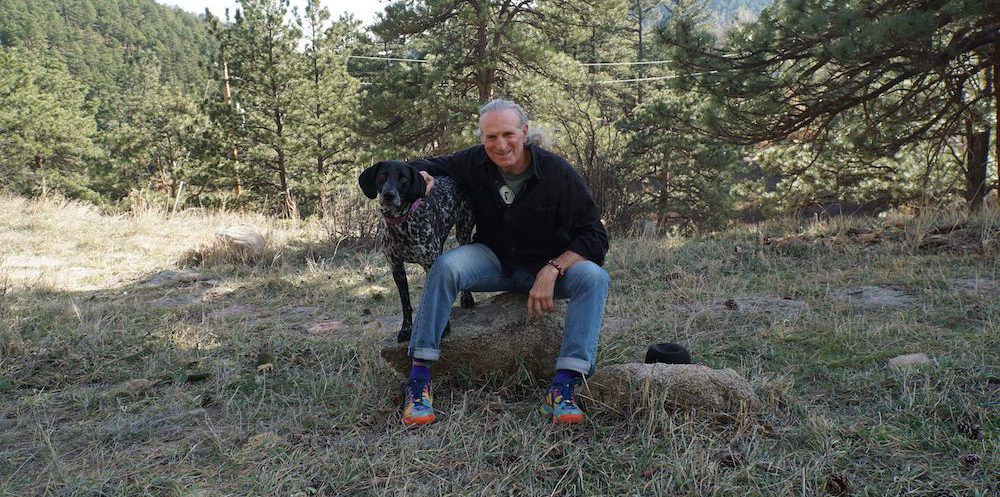Dr. Marc Bekoff, professor emeritus of Ecology and Evolutionary Biology at the University of Colorado, Boulder—and frequent Digest source—has studied dogs for more than half a century. His new book, Dogs Demystified, is laid out in an encyclopedia-like A-to-Z format, and covers such topics as howling, oxytocin’s role in bonding, and whether dogs can be creative. It also features a foreword by Dr. Jane Goodall and illustrations by famed folk musician Joan Baez.
Below are some excerpts from our wide-ranging discussion with Dr. Bekoff regarding what he wishes more people knew about dogs—and what he’s still figuring out after spending most of his life researching them.
Dogs Demystified is available now.
What do you think most mystifies humans about dogs, and what do you wish they understood about dogs that they tend not to?
The main reason I wrote this book really is to make people “fluent in dog”—which will make their dogs happier, which will make the people happier, and will make the relationships they form happier.
I believe that, due to long-term breeding, domestication, dogs want to please their humans—but not unconditionally. Two big messages in the book are that dogs are not unconditional lovers, and they’re not necessarily our best friends. Dogs are not going to do anything we ask them to do if we mistreat them.
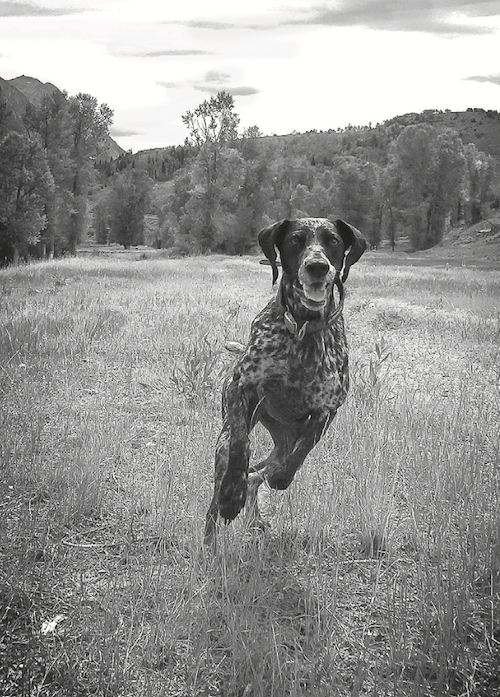
Minnie. Photo: Lisa Kalfas
A recent article contended that many of our pets are miserable. You were quoted in that piece advising people to more carefully consider whether they can fulfill a dog’s needs. What’s your response to those who wonder whether humans should keep pets at all?
In that article, I said something like “that question is 1,000 years too late.” It’s unlikely that we’re not going to have dogs as pets—so I say fewer dogs with higher-quality lives. I do think that homed dogs, and perhaps a lot of free-ranging dogs, are more stressed [than they need to be.]
My take is that, when people get a dog, I’d like them to be fluent in Dog 101, just basic dog behavior, because I think that would make their lives and their dogs’ lives much better. Understand that dogs are emotional beings, understand that dogs might have some say in the matter of how they’re treated and what we ask them to do.
When it’s used in reference to dogs, the word “dominance” can be loaded. What does the term mean to you? And if you’re a human living with a dog, is the concept useful at all?
I think the bumper sticker is, just because there are alpha dogs, alpha wolves, alpha coyotes—just because they form dominance relationships—doesn’t mean that we should try to train them to do what we want by dominating them. So “dominating” to me has sort of the connotation of controlling by force or punishment. And we know positive dog training really works.
My learning curve was vertical. When I started writing for Psychology Today about 14 years ago, people were saying either that there’s no such thing as dominance among animals; or that wild animals form dominance relationships, but dogs don’t. I’m an ethologist, and I’ve done field work on coyotes, dogs, and foxes, and I’m going, “That’s ridiculous—of course they form dominance relationships.”
And then I learned that some people said, “Well, we don’t like to use the term ‘dominance’ or ‘alpha,’ for example, because then it sort of gives license to some people to try to get the dog to do what they want by dominating them.” I realized that some people who denied that dominance occurred in dogs or other animals were doing it because they didn’t want to send the message that because dogs dominate one another that we’re also allowed to dominate them.
So dominance to me is: I’m with you and I move towards you, and you move away; I’ve influenced your behavior. But the way “dominance” usually is used is: You’re controlling somebody by being assertive or aggressive.
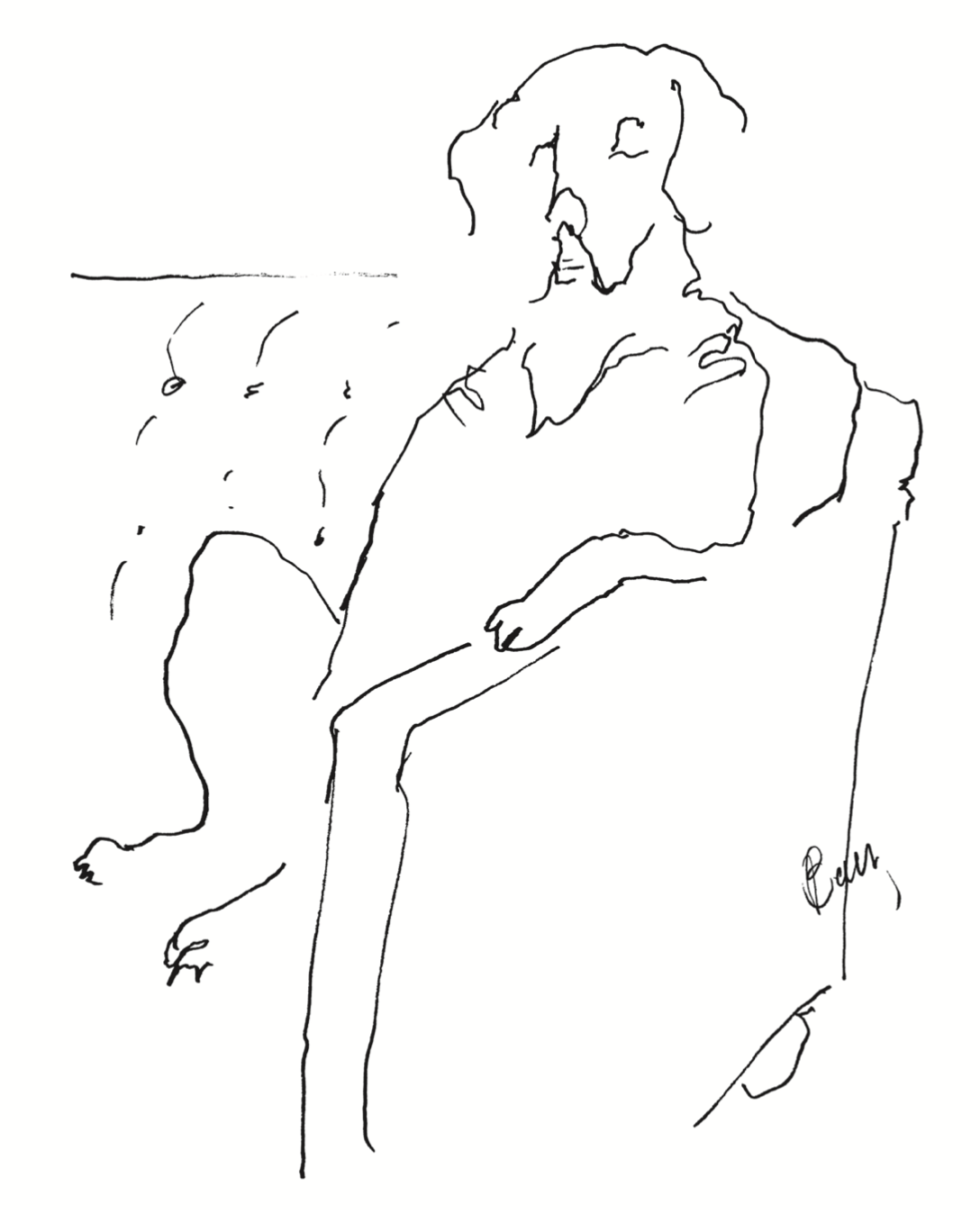
Illustration by Joan Baez
You’ve written about different ways that dogs have achieved leadership status, including by being more agreeable.
Yeah, I have. There’s a whole literature on the survival of the friendliest, survival of the agreeable. Wild wolves are certainly not as aggressive as some people make them out to be, and they’re certainly not as peaceful. They do have fights—they occasionally battle for being the top wolf, male or female, in the pack—but there is a lot of research that shows that a lot of times the more agreeable animals, if you will, can become leaders.
In your book, you write about dogs playing humorous pranks. What’s an example of a dog playing a prank purely for their own entertainment rather than to get something else that they want?
People often conflate a dog having a sense of humor with showing off. My own dog would run around when I had people at my house and carry his favorite toy or rag—but often stop and look around, seemingly to make sure people were looking at him and laughing. I’m not saying he was doing it to make the people laugh, but I think he was having fun, running around, shaking a sock or his toy. And I’ve seen young coyotes running around with a bone or a stick in their mouth trying to get others to play with them, using it as a lure to get them to jump in to play—so it also might be a play invitation.
I don’t know why some of the dogs who I wrote about were showing what I call a sense of humor, but let’s find out. No one’s ever systematically studied the question “do dogs have a sense of humor?” It looks like they do.
You also write about dogs displaying creativity. One example you give is a video of a beagle pushing a chair into place as a stepping stool to get chicken nuggets out of a toaster oven. What are your favorite examples of dogs being creative?
Tool use—the examples I have of using a toy to push something, or a dog using a chair to get up on a counter—I think that’s creativity.
But I also think that they’ve become creative in terms of getting one’s attention. I worked at home a lot even when I was at the university—I did a lot of my serious writing and data analysis at home. And one of my dogs would come over and sit next to me and drop a ball in my lap. Now, there’s nothing really creative about that, other than it got my attention. And it seemed to be, after a while, they would do it if they were bored or had to go out and pee. So was it creative? I don’t know. But I remember the first time they did that, it blew my mind. They dropped the ball in my lap, I looked at it, and they ran to the door. I got up and let them out, so they got what they wanted by doing something they’d never done before.
So you’re seeing the creativity there because they were using the ball for something other than its direct, obvious purpose? The ball is “meant” to be played with, but the dog made the connection to say: “If I bring the ball to Marc, he’s going to pay attention and if I need something else he can give it to me?”
Exactly, yeah. I lived in the mountains. I could play fetch all day outside, there were miles where they could run. But I remember the first time it was like, “Oh, they’re trying to get my attention.” It turned out that outside was her friend Lolo. And maybe she smelled Lolo through the screen door; maybe she heard Lolo. I don’t know what got her to do it. But she got my attention.
You quote Konrad Lorenz saying that behavior is something a dog does and something a dog has. What does that mean to you?
In an evolutionary sense, a dog has behavior—it’s like it has a stomach and a heart, and evolved in a certain way given what dogs needed to survive. But when you say that behavior is something it has and something that it does, it means that it’s something evolution can work on. So there are reasons that dogs express aggression in a certain way, or there are reasons why play bows evolved.
For me, it opened up the door for thinking about how play bows evolved, or why aggression is often expressed by snarling and exposing the teeth, for example.
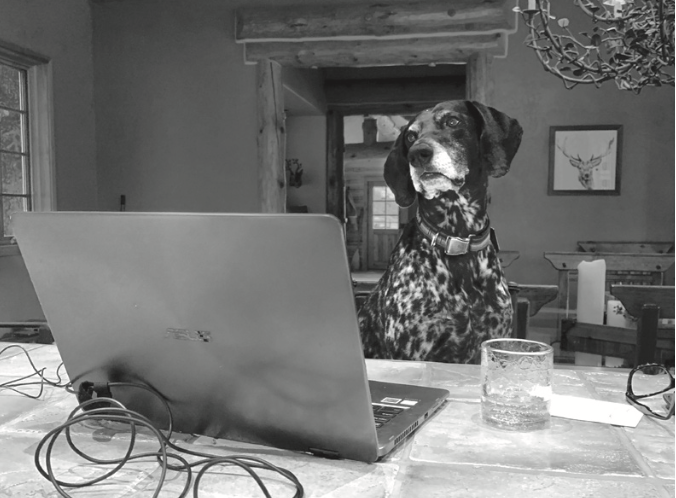
Minnie. Photo: Tom Gordon
Does the dog having the behavior in addition to doing it, the way they have a stomach, mean that humans can try to shape dogs’ behavior to some extent—but there’s some extent to which it’s fixed?
It can mean that, in the sense of having some inborn reflexes. A young puppy, when you touch their cheek, they turn to the nipple; that’s a thigmotactic reflex. They also will instinctively run away from sharp and loud sounds and approach soft, calming sounds.
But it also means that these behavior patterns may have evolved—like a play bow.
Maybe the first play bows weren’t as clear as they are now, but over time the way people would cash it out would be that the dogs who did play bows in a certain way and could get animals to play with them were more successful at forming social relationships, and maybe going on and mating and making babies. That’s really the simplistic Darwinian view. But the reflexes and the anti-predatory behavior—or the behavior patterns of approaching a soft, furry object or sound like mom—those would be behavioral phenotypes. They’re not wild animals, but there are certain things they need to do correctly the first time. They need to find a nipple. They need to seek warmth. They need to be able to find care when they’re young, because they can’t take care of themselves.
For a person, is understanding where behaviors came from evolution-wise part of listening to your dog and trying to take their perspective?
Precisely. When I’m at dog parks, people ask me: “Why does my dog do this when it makes no sense?” And it could be because it’s hardwired, or it could be because, like with play bows or snarling, they’ve learned that performing a certain behavior achieves a certain result; it’s adaptive to do so.
Concerning the initial use of the bow, we have no idea why it was done—but now we know the play bows are used to get dogs to play. What I love is bringing in the ethological and evolutionary points of view to dog behavior. Dogs are “artificial” organisms in the sense that we created them how we wanted them to be. But they’re still organisms, and somewhere in them there are still wolf genes and wolf neurons in their brains. So we can’t, and we shouldn’t, try to override their ancestry, but it may be expressed in ways or at times when we don’t like it. But that’s just who they are. They still have a lot of evolutionary inertia.
In the book, you mention a study by controversial researcher Dr. Rupert Sheldrake that seemed to suggest that Pamela Smart’s dog knew that she was coming home even when she didn’t follow a set schedule and there were no apparent clues about her return. Dr. Sheldrake hypothesized that telepathy was one possible explanation. Is it possible that the dog was sensing something in the physical world, but that the humans involved simply couldn’t figure out what it was?
Rupert was in Boulder at the time that this work was being done, and we talked a bit about it. Concerning the study, two reviewers thought it was acceptable, two didn’t, and I was a tiebreaker. I couldn’t find anything wrong with the study, and I honestly couldn’t figure out how the dog was doing what he was doing. Two of the other reviewers agreed that there was nothing wrong with the methodology.
Some people were and remain skeptical. In my note to the editor, I wrote something like, “I have no idea what’s going on here, but if I look at the data objectively—he saw what he saw, and he collected what he did.”
Somebody wrote a very pejorative thing about me, saying: “Marc’s a great scientist, but he thinks dogs show ESP or telepathy.” No! I never said that. I just said that I could not find something wrong with the study he did. I recently heard from another one of the tiebreaking reviewers, and it turns out he’s in the same camp as me. He just couldn’t find anything wrong. The empirical data looked really good, so he said, “Yeah, publish it; let’s see what happens.”
Rupert never came out with some of the claims people made; it’s just his papers and his books really lead you to think that there’s something cosmic or ESP-like going on.
This reminds me a little bit of a recent Atlantic article about the reaction to studies that, for whatever reason, appeared to “show a mysterious health benefit to ice cream.”
I think I did hear about that ice cream study. It actually relates to one of the main messages of my book. There are a lot of factors that go into why a particular food might be bad for me or good for you or vice versa, and there are a lot of reasons why a lot of the studies of dogs, especially the studies in which dogs are compared to wolves or vice versa, come up with contradictory findings. They are studying different dogs with different researchers in different laboratories, and with different protocols.
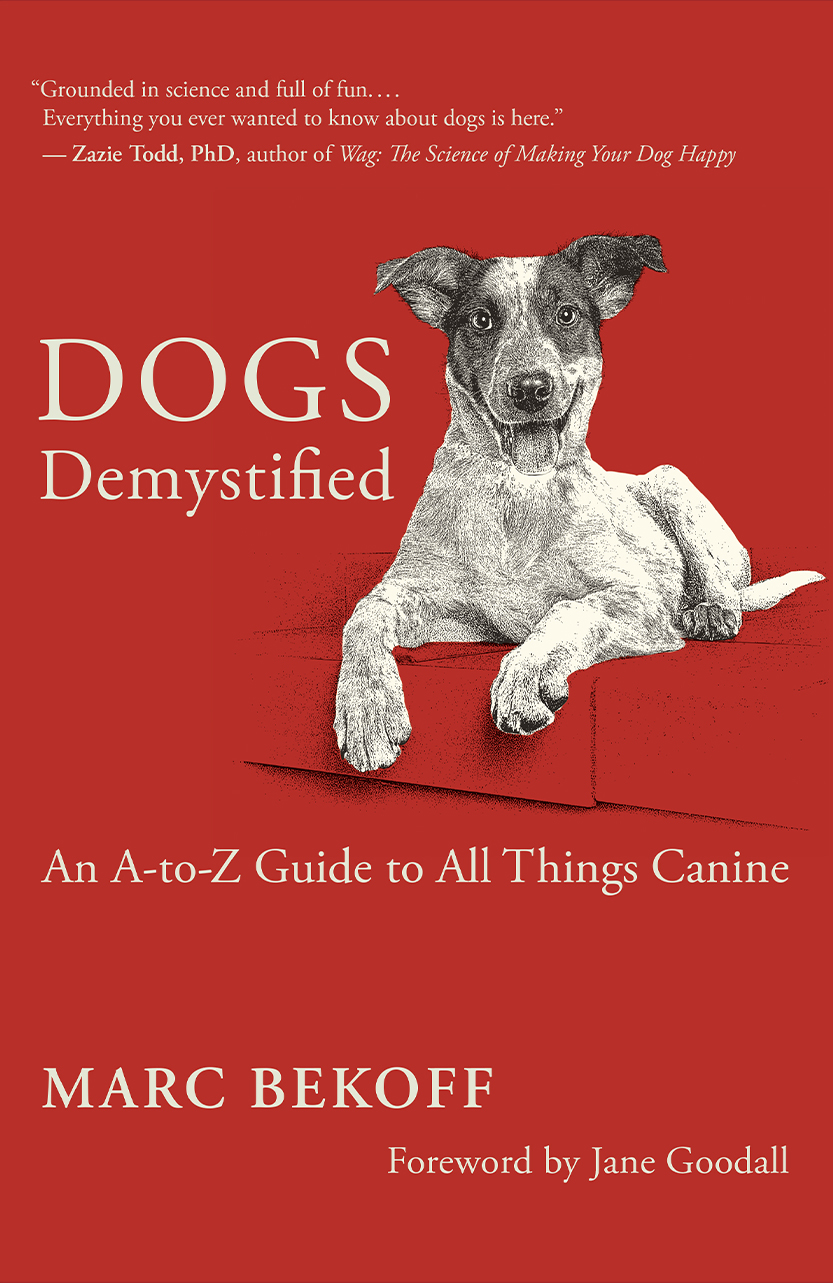
You write about how you can’t necessarily generalize about all dogs any more than if you did a study of me and my friends versus you and your friends. You might not be able to extrapolate that, “Well, this is how all people behave.”
That’s precisely right. And two of the people who have done these studies on dogs thanked me for writing about that topic—because one of the messages they’ve sent in a lot of their papers is that “this is what we found with the dogs we studied, using the methods and the experimental setup that we used.” So it’s not surprising that there are differences. But one of the things I wrote in the book was that some people go from these studies of 10, 15, or 20 dogs to coming up with great theories of domestication. And that, to me, is just a little too fast and premature.
This interview has been edited for length and clarity.



